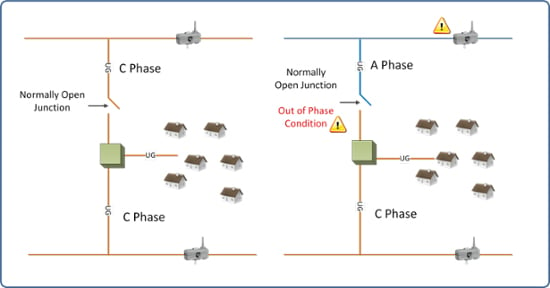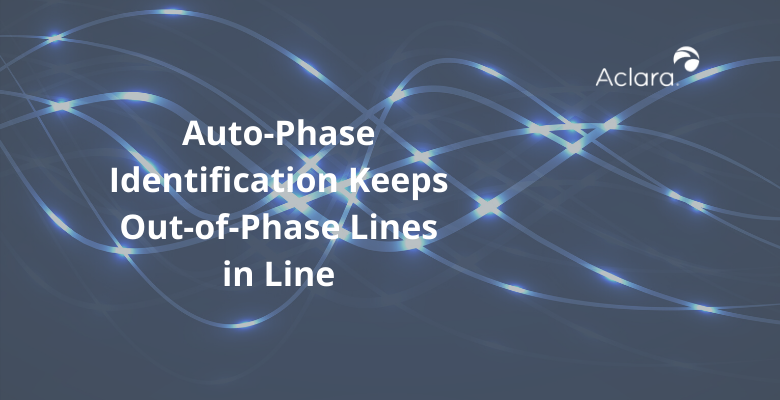During new construction, storm restoration or removals of aging equipment, maintaining accurate records of your distribution grid can prove challenging. Computer systems such as a Geographic Information System (GIS) are used by many utilities to manage asset records. However, these systems come with a cost. Without near perfect record keeping, GIS systems can become out of date after long periods of construction, repairs and changes. Maintaining records can be a painful, manual process for many utilities and often gets lost in the day-to-day operations that are a much higher priority.
One commonly inaccurate piece of information is the phasing of the overhead and underground lines. Listed below are four common reasons of how your power lines can get out of phase:
1.) No Standard Practice: Some utilities employ construction techniques to help the continuity of phasing, where the middle phase is always “B” phase, for example. However, many utilities do not have standards for phase position.
2.) Differences in Poles: Different pole framing techniques and transposing phases can easily cause phasing to be inaccurate in the GIS system.
3.) Inaccurate Phase Markers: Phase markers are installed on the pole or cross arm at regular intervals so the lineman and engineers can identify the phasing, but phase markers can also be inaccurate.
4.) Installed Incorrectly: The phases can also be installed incorrectly after an outage occurs, such as when a tree falls on the line and breaks the wire. Particularly after widespread storms, phasing mistakes can sometimes occur in the rush to get power restored quickly.
Aclara grid monitoring with auto-phase identification
In order to help utilities with proper phase identification, Aclara’s Grid Monitoring platform can keep phases accurately updated without any additional hardware or software. Aclara’s smart grid line sensors detect the correct phase automatically and provide this information in the Aclara Sensor Management System (SMS) software so it can be shared with engineers and operators for various applications such as phase balancing, record purification in GIS systems and ensuring single phase switching will not cause a phase-to-phase fault. By using Aclara Grid Monitoring to determine the phasing of the line, you can eliminate the need for manual phasing checks which can:
- Help your utility save operational expenses
- Improve the accuracy of your GIS, outage management and distribution management systems
- Protect the safety of your crews

The Auto-Phase ID is not a convenience feature; it is a necessity for all utilities. Proper phase identification is a core requirement for the operation of multi-million-dollar OMS and DMS systems. Without correct phasing information, a utility’s significant investment could be at risk of being deemed unreliable for certain switching operations. It could also impact worker safety if the phasing is changed accidentally. The problem may not reveal itself for many months or years after the phasing was flipped. The Aclara smart grid sensors will send immediate notification of the error and let you correct it before it causes an accident or another outage. They can also eliminate the need for manual phasing checks by lineman using phasing sticks, thereby saving Operating and Maintenance (O&M) costs to the utility.

